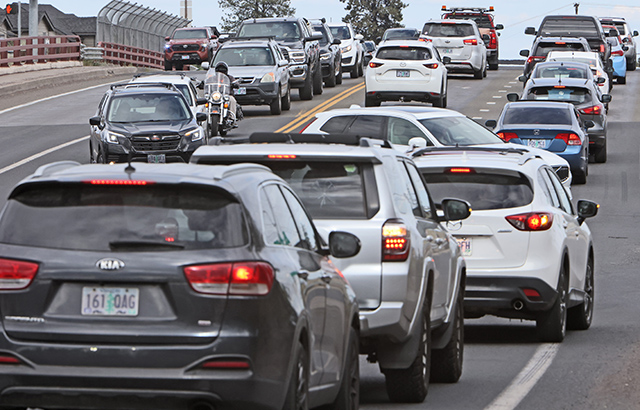Editorial: Does the state need a mandated percentage of public defenders employed by the state?
Published 5:00 am Tuesday, February 18, 2025

- Legislators hear testimony in September about Oregon's public defense crisis.
Oregon has a public defender problem. It isn’t providing a lawyer to everyone who is entitled to one. Gov. Tina Kotek and legislators have repeatedly called that “unacceptable.”
As of Friday, there were 4,101 individuals in Oregon entitled to an attorney and the state of Oregon did not provide them with one. There were another 1,726 people who were previously unrepresented, did not appear in court and a warrant has been issued.
Trending
When a defendant does not have an attorney, it undermines justice for them, delays justice for any victim and erodes justice in Oregon. The U.S. Supreme Court has said it is a requirement under the Constitution to provide lawyers to people who can’t afford them.
The good news is the Oregon Public Defense Commission, legislators, Gov. Tina Kotek and others are working on the problem. The Oregon Legislature required with Senate Bill 337 that 20% of public defenders be state employed by 2031 and 30% by 2035. Do those increasing percentages make sense? It could be a good way to make up the gap in public defense. A specifically mandated percentage may also not make sense.
The state has different arrangements with different types of attorneys. Some are paid by the hour. Some contract with the state and there are those employed by the state directly. Which delivers the most bang for the buck?
That’s information the Oregon Public Defense Commission says it does not have. “The agency does not have data on the ‘value’ of each type of provider of court-appointed legal representation, therefore an apple-to-apples comparison is not possible,” OPDC Executive Director Jessica Kampfe told us in a statement.
There are different types of providers that provide the service of public defenders.
- Regular hourly attorneys take cases on an ad hoc basis for an hourly rate. They earn $130 to $145 an hour based on the type of case.
- Attorneys in the state’s “temporary hourly increase program” take on cases for individuals who are held in custody without an attorney. They earn $164 per hour, $175 per hour or $200 per hour based on the type of case.
- The bulk of the cases are represented by contracted attorneys. It could be an attorney or a group of attorneys. There are 19 contracts with nonprofits with a total of 260 attorneys. There are 27 contracts with consortia with 249 attorneys. There are contracts with 48 law firms with 87 attorneys. The contracts pay a fixed fee every month and those contracts are based on something called “maximum attorney caseload.” It’s a weighted calculation based on the types of cases for such things as felonies and misdemeanors.
- The state also has attorneys directly employed by the state. The first office opened in Portland and now there are offices in Salem and Medford. The state employs 20 attorneys and also paralegals, secretaries and other staff for those offices.
The Oregon Public Defense Commission produces several excellent dashboards and many other analyses. But as Kampfe told us there is no apples to apples comparison of bang for the buck.
Trending
“Public defense is about more than who can do the job the cheapest or who can take the most cases,” Kampfe told us. “Cases have varying degrees of complexity and severity. Attorneys have different qualifications and levels of experience. We must not forget that defendants’ and victims’ lives and futures are at stake. Therefore, the work must be done competently and be given the time, resources and diligence needed to protect people’s constitutional rights. That’s why there are standards for how many cases attorneys can take and the qualifications they need to represent specific types of cases. A purely cost-driven approach in which public defenders are overworked and underpaid might push them to take on too many cases, leading to burnout, high turnover and inadequate representation.”
We agree with her. We also would add that in some areas of the state, the only way to fill a gap in public defense may be for the state to make direct hires. But if legislators, Gov. Kotek and Oregonians are to judge that it is right to have a certain percentage of public defenders directly employed by the state, a comparison of bang to buck should be a factor the state provides to consider.








